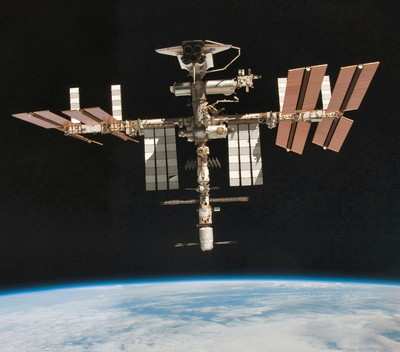Fri, Sep 14, 2012
Requests Proposals For Initial Contracts To Certify Commercial Crew Transportation Systems
NASA on Wednesday released a request for proposals for the first of two contract phases to certify commercially developed space systems in support of crewed missions to the International Space Station. Through these certification products contracts, NASA's Commercial Crew Program (CCP) will ensure commercial missions are held to the agency's safety requirements and standards for human space transportation system missions to the space station.

NASA's request for proposals outlines a two-phase approach in which the first phase awards will be made to multiple companies. The companies will provide data related to the development of their Crew Transportation System (CTS) design, including a spacecraft, launch vehicle, ground and mission operations and recovery. NASA plans to award up to $10 million to each company in early 2013 for the first phase.
The first phase will last about 15 months, during which companies will outline their strategies to meet the agency's required standards and safety requirements before a CTS could be approved to fly NASA astronauts to the space station. "We're looking forward to a strong U.S. industry response for this certification phase," said Ed Mango, NASA's CCP manager. "This is a major step in certifying transportation systems that can meet America's goal of transporting our astronauts to and from the space station."

At the conclusion of the first phase, the agency anticipates more than one company will be ready to compete for the second certification phase contract. The second phase will be open to any company with systems at the design maturity level of Phase 1. The second phase will include development, testing, evaluation and certification activities enabling NASA to assess and approve the CTS capability for performing space station missions in compliance with NASA requirements.
The objective of CCP is to facilitate the development of a U.S. commercial crew space transportation capability with the goal of achieving safe, reliable and cost-effective access to and from the space station and low Earth orbit. After the capability is matured and expected to be available to the government and other customers, NASA could contract to purchase commercial services to meet its station crew transportation needs.
More News
Aero Linx: International Federation of Airworthiness (IFA) We aim to be the most internationally respected independent authority on the subject of Airworthiness. IFA uniquely combi>[...]
Ultrahigh Frequency (UHF) The frequency band between 300 and 3,000 MHz. The bank of radio frequencies used for military air/ground voice communications. In some instances this may >[...]
A Few Questions AND Answers To Help You Get MORE Out of ANN! 1) I forgot my password. How do I find it? 1) Easy... click here and give us your e-mail address--we'll send it to you >[...]
From 2019 (YouTube Edition): Learning To Paint Without Getting Any On Your Hands PPG's Aerospace Coatings Academy is a tool designed to teach everything one needs to know about all>[...]
Also: Sustainable Aircraft Test Put Aside, More Falcon 9 Ops, Wyoming ANG Rescue, Oreo Cookie Into Orbit Joby Aviation has reason to celebrate, recently completing its first full t>[...]
 ANN's Daily Aero-Linx (05.06.25)
ANN's Daily Aero-Linx (05.06.25) ANN's Daily Aero-Term (05.06.25): Ultrahigh Frequency (UHF)
ANN's Daily Aero-Term (05.06.25): Ultrahigh Frequency (UHF) ANN FAQ: Q&A 101
ANN FAQ: Q&A 101 Classic Aero-TV: Virtual Reality Painting--PPG Leverages Technology for Training
Classic Aero-TV: Virtual Reality Painting--PPG Leverages Technology for Training Airborne 05.02.25: Joby Crewed Milestone, Diamond Club, Canadian Pilot Insurance
Airborne 05.02.25: Joby Crewed Milestone, Diamond Club, Canadian Pilot Insurance




